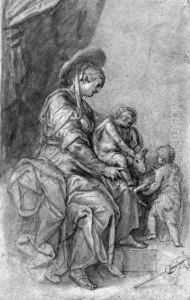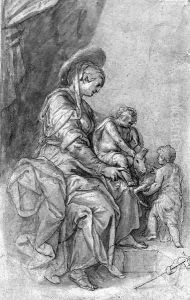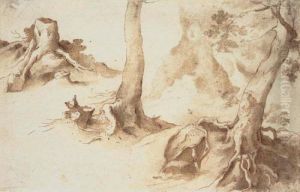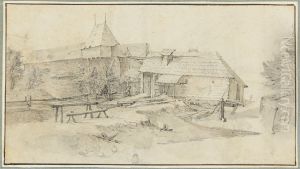Paulus Van Vianen Paintings
Paulus van Vianen was a renowned Dutch silversmith and sculptor of the late 16th and early 17th centuries, celebrated for his contribution to the development of the auricular style in metalwork. Born into an artistic family in Utrecht, the Netherlands, in 1570, he was the brother of another famous silversmith, Adam van Vianen. Paulus trained under his father, Evert van Vianen, who was also a silversmith, and this early education provided him with a solid foundation in the craft.
Paulus's work was characterized by a fluid, organic form and the use of intricate, lobed designs that often resembled the cartilage of the ear, which is where the term 'auricular style' originates. His style was innovative for the period and had a significant impact on the Baroque art movement in Northern Europe. Paulus traveled extensively throughout Europe, which allowed him to be influenced by and to influence the work of other craftsmen and artists. He spent time in Prague serving Emperor Rudolf II, who was a great patron of the arts and a collector of works by leading artists of the time.
The quality of his craftsmanship and his unique style earned him a considerable reputation during his lifetime. His works were sought after by high-ranking patrons, including royalty. Paulus van Vianen's legacy lives on through his surviving works, which include beautifully crafted silver vessels and decorative items, many of which are held in museums and private collections around the world.
Paulus van Vianen died in 1613 in Prague. His brother, Adam van Vianen, continued to work in the auricular style and further cemented the family's name in the annals of art history. The van Vianen brothers were key figures in the transition from Mannerism to the early Baroque style, influencing a generation of silversmiths and artists across Europe.



